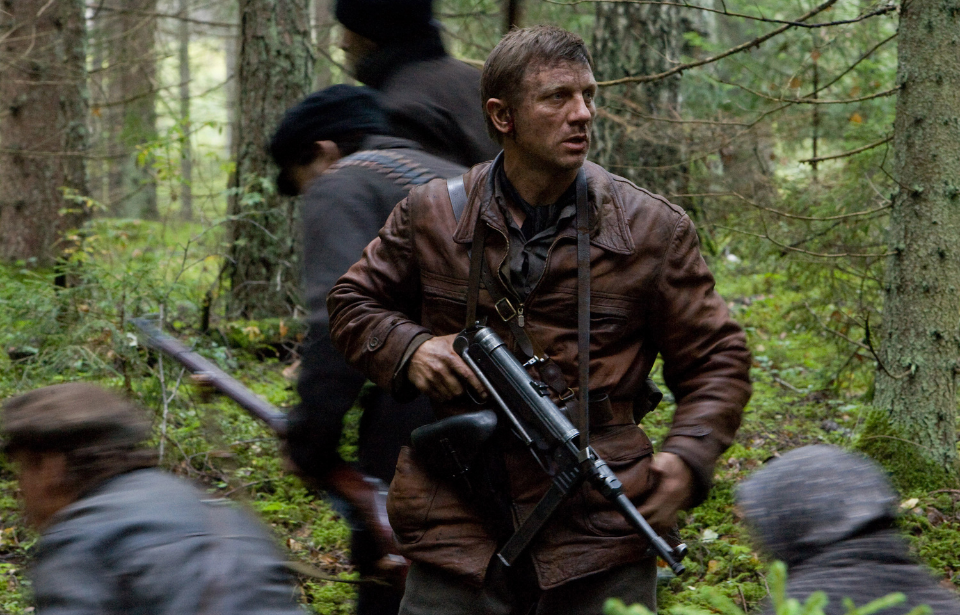As the Axis Powers increased their sphere of influence across Europe during the Second World War, various Resistance groups popped up. With a desire to banish the enemy, save the persecuted and return Europe to peace, they regularly risked their lives for their cause. One of these organizations was the Bielski Partisans, which was formed by four brothers looking to do their bit.
Growing up in pre-war Poland
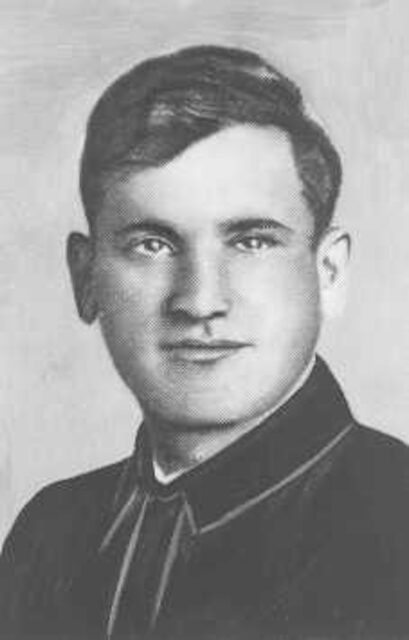
The Bielski brothers – Tuvia, Asael, Zus and Aron – were born into a 12-child Jewish family in Stankiewicze, a small village that was then part of pre-war Poland. Their father, David, was a highly respected member of the community, but this didn’t prevent the family from being subjected to anti-Semitic behavior by the non-Jewish villagers they lived alongside.
Tuvia, the eldest, was a natural-born leader who’d shown interest in Zionist youth activities and had served in the Polish Army for a number of years, while Asael was on the quieter side. Zus was the most brash and fearless, with his antics frequently getting him into trouble with the local authorities.
Forming the Bielski Partisans
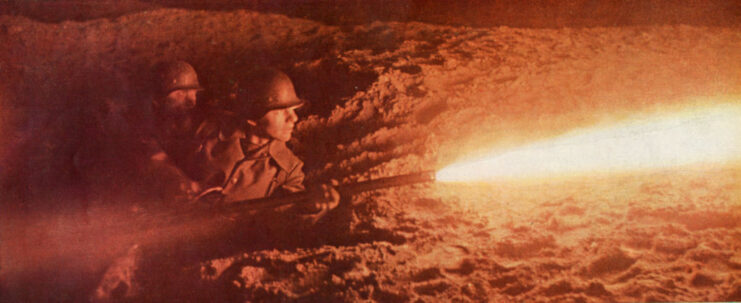
Following the German and Soviet invasions of Poland, Stankiewicze fell under Soviet control and renamed Western Belorussia. Just under two years later, during Operation Barbarossa in 1941, the Bielski clan suffered blow after blow. The family found themselves living in the Nowogrodék Ghetto, with both parents and the two youngest siblings among the 5,000 Jews who were killed during a massacre on December 8 of that year.
The surviving family members fled into the forests of western Belarus, where they began hatching a plan to fight back against the Germans. In 1942, the Bielski Partisans were established. Under Tuvia’s leadership and initially consisting of 40 family members and friends, they aimed to both rid the area of enemy forces and save as many Jews as possible.
Through rescuing Jews from nearby ghettos and encouraging others to flee, the group quickly grew, with it coming to encompass 300 members by the end of the year. Each brother had his own role. Asael became Tuvia’s right-hand man, while Zus was tasked with reconnaissance. Despite only being in his preteens, Aron, too, played a part in gathering intelligence.
As the Bielski Partisans’ numbers continued the grow, the brothers were faced with providing for and protecting their members. A base was established in the treacherous Naliboki forest, which consisted of a school, workshops and a synagogue, among other facilities. Those refugees skilled in a trade supported the Resistance by working as blacksmiths, cobblers and tailors, while around 150 served in combatant roles.
Fighting back against the German invaders
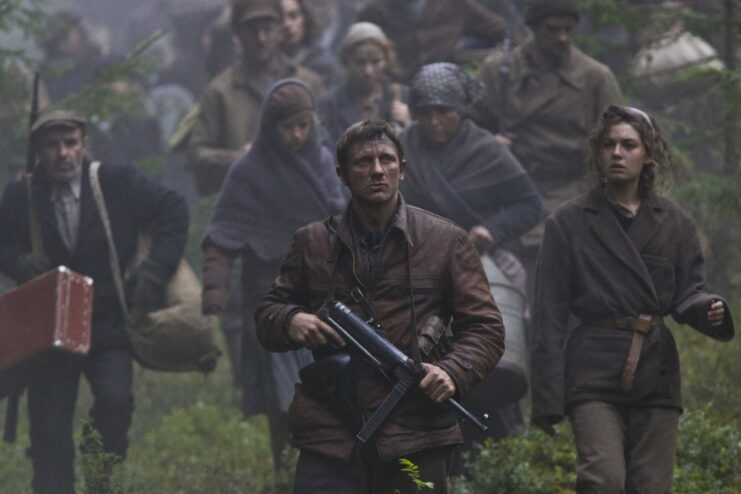
The combatant arm of the Bielski Partisans conducted a number of raids against German supply convoys and local collaborators, which resulted in the gathering of food stores and weaponry. They also launched attacks on Belorussian auxiliary police officials.
While not officially declaring an affiliation, the group often partnered with local Soviet partisans, despite the latter sometimes being leary of the number of non-combatants in the Bielskis’ midsts. Together, they were able to pull off a host of sabotage operations against the Germans, and it wasn’t long before the Soviets wished to completely bring the Polish Jews into their fold.
While Tuvia resisted, wanting to keep the Bielski Partisans’ sovereignty, the group was later split by Soviet Resistance Gen. Vasily Efimovich Chernyshev (better known as Gen. Platon). Over the course of the war, it’s believed they killed 381 enemy fighters, with just 50 members lost.
Issues arise within the Bielski Partisans
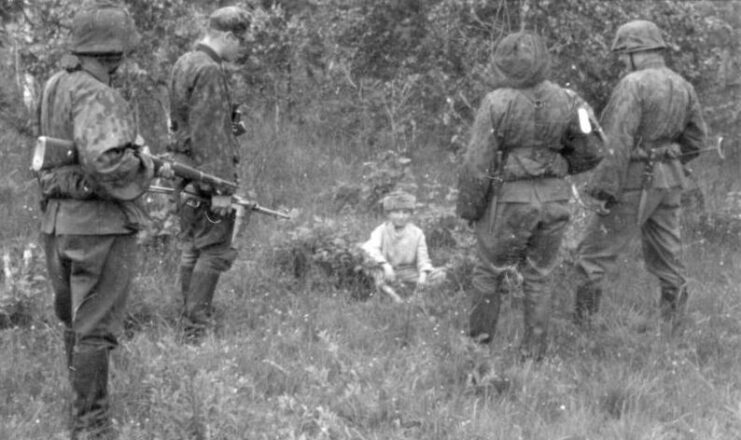
As with other Resistance groups across Europe, the Bielski Partisans faced a number of challenges, from external forces and from within. The Germans, aware of their existence and that of other Resistance groups, tried of several occasions to flush the partisans out of the forest, going so far as to dropped pamphlets over the area, calling for Tuvia’s arrest.
One mission, dubbed Operation Hermann, involved a staggering 52,000 soldiers, SS officers and pilots, and it not only targeted the Bielski Partisans – every Resistance group in the region was at risk. Over the course of a month, between 21,000 and 25,000 partisans were arrested and sent to forced labor camps, including members of the Polish Home Army, and nearly 4,300 civilians were killed. The Bielskis were lucky to escape, moving deeper into the forest, where they faced harsher conditions than before.
Within the group, the brothers contended with disputes over everything: food distribution, the recruitment of non-combatants and leadership. The latter was the result of Tuvia’s authoritarian-style leadership. The resentment toward him wasn’t helped by the belief he was stashing away valuable items like gold and jewelry – an act that went against the partisans’ rules.
What happened after World War II?

In July 1944, the Soviet Red Army launched a massive offensive against the Germans in Belorussia. Operation Bagration, as it was called, liberated the region where the Bielski Partisans operated and resulted in the largest German military losses in history. It’s said some 450,000 soldiers were killed, while another 300,000 were cut off at the Courland Pocket.
By this time, the Bielski Partisans had grown to more than 1,200 members, making it one of the largest Jewish Resistance groups of the Second World War. Once the Soviet victory was secured, there was no need for the group to remain. It was disbanded after one final parade.
Asael found himself conscripted into the Red Army, and he was tragically killed at the Battle of Königsberg. Tuvia, Aron and Zus survived the conflict. The former pair emigrated to Palestine, where they fought in the Arab-Israeli War of 1948. They later went to the United States, which is exactly where Aron moved. While his brothers opened up a successful trucking company, he opted to establish his own taxi business.
Defiance (2008)

In 2008, the Bielski Partisans’ story made its way to the big screen with Defiance. James Bond actor Daniel Craig took on the role of Tuvia, and while the film brought his and his brothers’ heroics to a wider audience, it also sparked controversy. Critics in both Poland and Belarus accused the feature of perpetuating historical inaccuracies, with a showing in Poland being booed by audience members.
One controversy surrounded the depiction of ampicillin treating an outbreak of typhus. This was discredited by historians, who explained that the medicine wasn’t invented until the late 1950s – far too late for it to have been used in World War II. Another spoke out against the insinuation that the Bielski Partisans’ worked with Soviet Resistance groups directed by the NKVD, which couldn’t be further from the truth.
More from us: Aaron Bank: The ‘Father of the Green Berets’ Who Revolutionized Special Warfare
Want to become a trivia master? Sign up for our War History Fact of the Day newsletter!
Despite the controversy, Defiance received nominations for its film score from both the Academy Awards and the Golden Globes.
